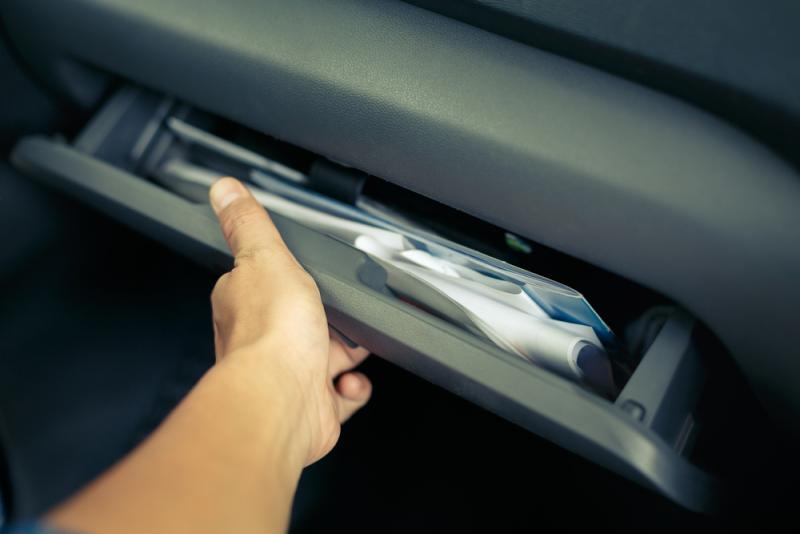Should you keep documents and paperwork in your glove box?

When was the last time you checked what was in your glove box? Keeping your vehicle’s essential documents easily accessible may pay dividends in the event of a roadside emergency. So what exactly should you keep in your glove box?
Vehicle Handbook
The vehicle owner’s handbook contains all of the essential details for the operation of the car and its equipment. Among this, essential technical information such as tyre pressures, oil specification, fluid capacities and procedures to follow in the event of a warning light or breakdown.
It is advisable to read this handbook fully when you first take ownership of the car but essential that it is available in the glove box for quick and easy reference when required.
Service Record
The service record is usually supplied as a separate manual and kept in a wallet along with the owner’s handbook. Keeping this service-booklet in the glove box makes it easily available for garage staff such as service engineers and mechanics to record any maintenance and repair work when it has been completed.
It’s also useful to keep any invoices and receipts for tyres, parts, repairs and maintenance work with your service booklet as additional proof of work carried out and to further underpin the maintenance history of the car. If you purchased a car history check when buying the vehicle, it’s worth keeping a copy of this along with the service record for reference by anyone buying the car in the future.
Registration and Legal Documents
While it’s essential to keep your Vehicle Licensing and insurance documents in a safe place, it’s not necessary to keep them in the vehicle. The relevant portion of the Insurance and NCT certificates are already displayed on the windscreen and you will only need further documentation if you are asked to produce it at a Garda Station. Similarly, your driving license is best kept on your person rather than in the vehicle.
Emergency Rescue and Recovery Details
If your insurance policy includes roadside rescue and recovery, it is useful to keep these particular policy details to hand in the glove box, along with the relevant contact number for requesting assistance. In the event of a breakdown, you may be asked for these details at the point of making the emergency call.
Personal Emergency Contact Numbers
In the unfortunate event of an accident, rescue or emergency personnel may need to contact a family member or relative on your behalf. It is worthwhile creating a simple ICE (In Case of Emergency) card or document listing the names and numbers of your emergency contacts. Your ICE card is also a useful place to specify any medical conditions or specific medical requirements you may need in the event of an accident.
Other Useful Items
Apart from essential documents, it's worth keeping some other useful items in the glove box. A torch, phone charger, and a first aid kit will take up little space and may prove invaluable in the event of an emergency.
Author

Justin Kavanagh
Justin Kavanagh is a recognised leader
in automotive intelligence and vehicle
data supply to the entire motor industry.
He has almost 20 years experience in
building systems from the ground up.
As the Managing Director of Vehicle
Management System, he understands the
need and importance of trustworthy and
reliable vehicle history and advice to
both the trade and the public.
Follow me on LinkedIn